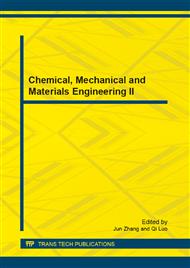p.369
p.373
p.378
p.385
p.393
p.399
p.404
p.409
p.414
The Performance Analysis and Prognosis Techniques of Gearbox
Abstract:
Under the situation of increasingly stringent requirements for production speed and quality, gearboxes in many manufacturing equipment production lines lose final processing quality after long-term severe service.Machine fault prognosis is for experts or on-site maintenance personnel to use measurement equipment to capture signals and conduct diagnosis and maintenance based on personal experience. As technologies are advancing rapidly and equipment is evolving with increasing level of scale, automation and complexity, traditional diagnostic methods are no longer applicable. The article aims at vibration signal of gearbox to establish analysis and prognosis techniques. Principal components analysis is utilized to effectively capture the characteristic signal. Logistic regression and autoregressive moving average models are utilized to establish the correlation between characteristic signal and gearbox health status and performance trend model for on-site maintenance personnel to instantly understand gearbox health status and potential problems.In addition, Self-organizing map is utilized to establish fault identification model for maintenance personnel to significantly reduce troubleshooting time. In the article, gear-rotor experiment platform is used to assess the feasibility of gearbox performance analysis and prognosis techniques. It is expected to provide gearbox makers and users with understanding of gearbox health status and total solutions.
Info:
Periodical:
Pages:
393-398
Citation:
Online since:
May 2013
Authors:
Price:
Сopyright:
© 2013 Trans Tech Publications Ltd. All Rights Reserved
Share:
Citation:


